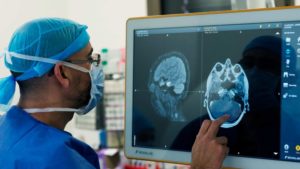Communication remains the key element for top-notch health care services. Especially for radiology, swift communication determines fast actions and treatment. The critical reports of radiology should reach the referring providers without any delay. The findings of the radiologist may be critical for the survival chances of the patient.
The Study
Surprisingly, PLOS One has recently found a pretty different situation. According to the study published in this magazine, several musculoskeletal reports failed to reach the concerned departments immediately after their release due to communication failure.
CRR refers to critical radiologic reports which warrant additional attention. While such delays or communication failures can be life claiming at times, they can also trigger legal suit procedures for all involved. In case of a casualty consequent upon such delays, no one can skip the consequences.
The main author of this study was Yu Mi Jeong. Jeong belongs to South Korea’s Gil Medical Center’s Radiology Department. Along with other co-authors, Jeong mentioned in the study that critical reports need special handling.
Report Communication Errors
Sometimes, the reports should be communicated with urgency, and before the regular time. If critical reports fail to reach the physicians promptly, the entire course of treatment gets delayed. As a result, sometimes the patient’s condition goes beyond recovery. For critical reports, communication remains a matter of life and death.

Improvement Requirements
Clinicians lack an in-depth understanding of how these emergency reports matter in the case of musculoskeletal imaging. Consequently, they also fail to understand the gravity of the issues arising out of failed communications of these reports.
The researchers engaged two specialist radiologists for tracking down the critical reports pertaining to musculoskeletal imaging. These two specialists analyzed around 3217 reports from 2017 to 2020.
The team of researchers segregated the outcomes based on several parameters like image modality type, part of the body, clinical setting, incidental lesion and many more.
The Outcomes
Of all these reports, almost 5.4% accounted for musculoskeletal reports and 94.9%related to the musculoskeletal system. More than 50% of the reports were of the patients of emergency departments whereas, 30.9% were inpatients. For 54.3% of the records, the researchers found missing features.
As far as communication is concerned, 80% of the physicians reported having received the reports without any delay. The researchers dug down further to find out a substantial lack of follow-up processes among ED patients in particular. For ED patients, the lack of follow-up activities was around 35.2%, and the same for outpatients was only 6.1%. For inpatients, the percentage was even milder at 3.7%. According to the study, the experts need to intervene to do away with this discrepancy.
The authors further emphasized the necessity and importance of CRR communication. According to the team, the ED physicians should actively acknowledge the CRRs and communicate with the radiologists to improve the treatment they offer. The researchers also added that all clinical practices should have standard CRR manuals and adequate deployment.
The Healthcare sector is the backbone of any country. At Sepstream®, we offer the next level solutions for imaging. Be it the disease detection or the treatment procedure, flawless imaging remains essential for effective treatment. Our software solutions are AI integrated and available at affordable prices. Go through our website to explore more.